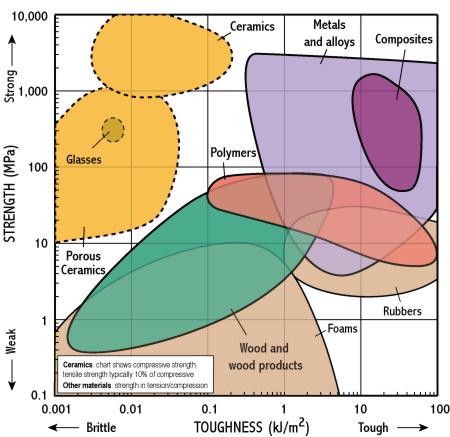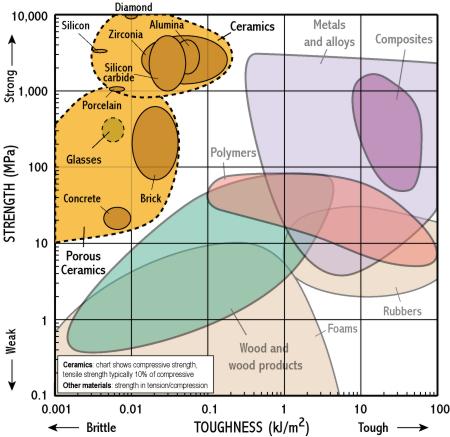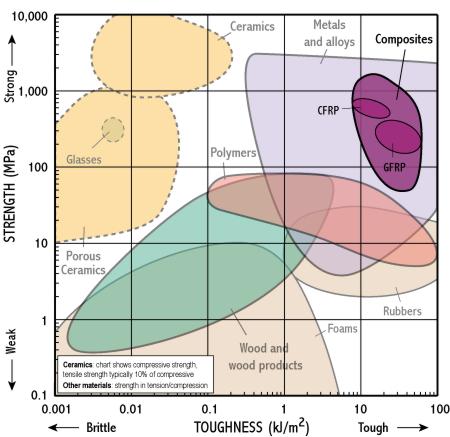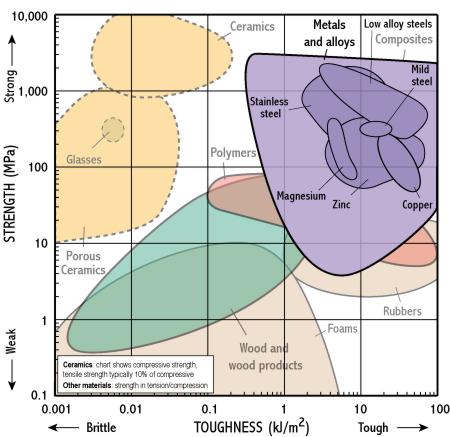Go to the basic non-Java version. Return to the charts main page
Strength - Toughness
Rollover class name to view individual materals, click chart to return to class view. Hover mouse over property for brief definition.
![]()








General Information
- Strength measures the resistance of a material to failure, given by the applied stress (or load per unit area)
- The chart shows yield strength in tension for all materials, except for ceramics for which compressive strength is shown (their tensile strength being much lower)
- Toughness measures the energy required to crack a material; it is important for things which suffer impact
- There are many cases where strength is no good without toughness, e.g. a car engine, a hammer
- Increasing strength usually leads to decreased toughness
- Tempered steel is tougher but less strong than after quenching.
Physical Insights
- Put a pin-prick in a balloon and begin to blow it up - it will burst when the elastic energy cannot be absorbed by the growing crack
- The tensile strengths of brittle materials are very sensitive to the presence of flaws
- Quenching carbon steel makes it very hard but brittle.
- Tough materials absorb a lot of energy as a crack grows through them
- Metals are tough because they deform plastically while they crack, absorbing energy
- Cast iron is often brittle because it contains graphite flakes which behave like little cracks within the metal
Example Uses
- Steel is often used to absorb energy in car impacts because it is tough and strong
- Saw blades and hammer heads are quench and tempered steel to get moderately high strength with good toughness
Simple Questions
- Why does prestressed concrete have high tensile strength?
- Select materials for a child’s cup or spoon.
- Select materials for a 13A plug casing for a vacuum cleaner.
- Select materials for a bullet/knife proof vest.
- Select materials for a bus shelter window.
Further Questions
- Thermal toughening of glass places the surfaces in compression the interior in tension - why does this increase the strength?
- Is rubber tough or brittle (hint: remember the balloon experiment)?
There are 2 separate populations for this class to improve clarity. Move the mouse over different parts of the class name to reveal each one.
Select chart: